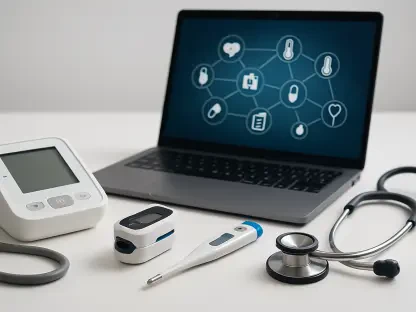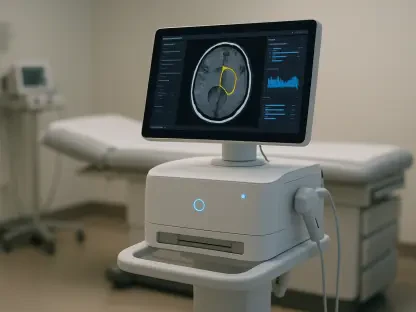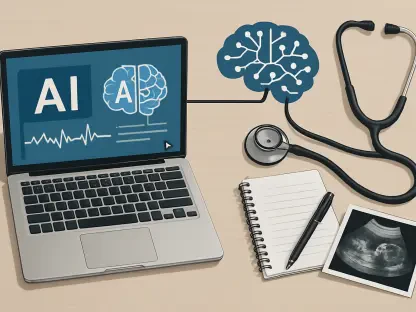A groundbreaking study from esteemed researchers at the University of California, San Francisco and Davis, has uncovered a troubling connection between radiation exposure from medical imaging and the incidence of blood cancers in children. This extensive research, involving data from nearly 3.7 million children, suggests that roughly one in ten cases of hematologic malignancies may be linked to radiation from procedures like computed tomography (CT) scans. Such findings raise critical questions about the safety of routine imaging practices in pediatric care. The implications are profound, as these cancers, which include lymphoid and myeloid malignancies as well as acute leukemia, often strike at a very young age, with many diagnoses occurring before the age of five. This revelation underscores the urgent need to reassess how medical imaging is utilized, balancing its diagnostic benefits against potential long-term health risks for the youngest patients.
Unveiling the Risks of Pediatric Imaging
The research highlights the inherent dangers of ionizing radiation, a recognized carcinogen, used in medical imaging technologies. Children, due to their developing bodies and longer life expectancy, are particularly susceptible to the harmful effects of radiation exposure, which can increase the likelihood of cancer over time. The study meticulously documented a direct relationship between the cumulative dose of radiation received and the risk of developing blood cancers. Notably, a significant proportion of these malignancies were identified in children under five, with a higher prevalence among males. This demographic vulnerability emphasizes the critical need for caution in pediatric medical practices. As imaging remains an indispensable tool for diagnosis, the challenge lies in mitigating its risks while preserving its life-saving potential. These findings serve as a stark reminder that even routine procedures can carry significant consequences for young patients if not carefully managed.
Further exploration into specific imaging modalities reveals that CT scans, especially those targeting the head, pose a substantially higher risk compared to other methods like radiographs. Children who underwent one or two head CT scans faced nearly double the risk of developing cancer, with the danger escalating dramatically to over three times the baseline with more frequent exposure. Approximately a quarter of subsequent blood cancers in the studied population were attributed to radiation from these scans. This data paints a clear picture of the need for stringent guidelines governing the use of high-radiation procedures in pediatric care. While imaging is often essential for accurate diagnosis, the potential for harm cannot be overlooked. Healthcare providers must weigh the necessity of each scan against the heightened risks, ensuring that alternatives or lower-dose options are considered whenever feasible to protect vulnerable young patients from preventable harm.
Addressing the Call for Safer Practices
In response to these alarming findings, the lead researcher, a radiologist and professor at UCSF, has advocated for a significant shift in how medical imaging is approached in pediatric settings. The emphasis is on performing scans only when absolutely necessary for a child’s treatment and utilizing the lowest possible radiation doses during procedures like CT scans. This perspective aligns with a growing consensus among medical professionals to prioritize radiation safety, particularly for children who are at greater risk. The push for minimized exposure reflects a broader movement within the healthcare community to adopt more cautious and innovative approaches. By integrating advanced technologies and alternative diagnostic methods, the medical field can reduce reliance on high-radiation imaging without compromising the quality of care. This proactive stance is essential to safeguarding the health of future generations while maintaining trust in medical practices.
Beyond individual practices, the study serves as a catalyst for systemic change within the healthcare industry. It calls for the development of stricter protocols and guidelines to govern the use of medical imaging in pediatric populations. The evidence suggests that up to 10% of childhood blood cancers could be prevented by reducing unnecessary radiation exposure. This statistic is a wake-up call for policymakers, radiologists, and pediatricians to collaborate on establishing standardized safety measures. Educational initiatives for healthcare providers and parents are also crucial to raise awareness about the risks and benefits of imaging. By fostering a culture of vigilance and informed decision-making, the medical community can better protect children from the long-term consequences of radiation. These efforts mark a pivotal step toward ensuring that diagnostic tools are used responsibly, prioritizing patient safety above all else.
Reflecting on a Path Forward
Looking back, the extensive research conducted by the University of California team provided sobering insight into the unintended consequences of medical imaging in pediatric care. The evidence linking radiation exposure to blood cancers in children prompted a critical reevaluation of existing practices. Moving forward, the focus should shift toward actionable solutions, such as investing in low-dose imaging technologies and enhancing training for medical professionals to optimize scan usage. Collaborative efforts between researchers, clinicians, and policymakers will be vital in developing innovative tools and protocols that minimize risks. Additionally, empowering parents with knowledge about when imaging is truly necessary can further reduce unnecessary exposure. These steps, grounded in the findings of past studies, offer a hopeful direction for safer pediatric healthcare, ensuring that the benefits of diagnostic advancements are not overshadowed by preventable health risks.









